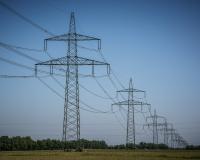
Vibrant Environment
Climate Change And Sustainability
All | Biodiversity | Climate Change and Sustainability | Environmental Justice | Governance and Rule of Law | Land Use and Natural Resources | Oceans and Coasts | Pollution Control

Interested in learning from leading scholars, policymakers, and practitioners about innovative policy proposals related to federal energy leasing, state preemption of local environmental initiatives, or free trade and enforcement of environmental laws? If so, you’ll want to attend the 12th annual Environmental Law and Policy Annual Review (ELPAR) conference on March 29, 2019, in Washington, D.C. The conference is free, and for those of you outside the D.C. area, it will also be available via webinar.

On January 29, 2019, PG&E, the largest utility company in California, filed for Chapter 11 bankruptcy. The announcement comes after a spate of wildfires in California have been linked to the company’s equipment and hardware—including a PG&E-operated transmission tower that investigators suggest may have sparked the deadly Camp Fire in Northern California. While the corporation struggles to maintain its public integrity amidst financial reorganization and internal reshuffling, energy consumers and producers alike have been left with an uncertain future.

“We’re a long way off, to tell you the honest truth.” A candid statement from New Zealand Climate Change Minister James Shaw, made days out from the 2018 United Nations Climate Change Conference—COP24 Katowice—on the possibility of New Zealand meeting its emission reduction commitment under the Paris Agreement.

In the international system, there are over 3,500 environmental agreements governing thousands of distinct ecosystems across hundreds of different nations. This complex spider-web of treaties, protocols, and commitments often lacks coherence, obscuring the role of environmental law in the international community. Despite efforts to consolidate international environmental governance with the inception of the United Nations Environment Programme (UNEP) in 1972 and the Paris Climate Accords in 2015, barriers to a consolidated system of environmental law still remain. While UNEP has certainly filled an important role in moving toward such a system, it has historically been unable to act as a unifying central authority in the way that U.N. bodies like WHO, FAO and UNESCO have.

Just weeks after the widespread Gilets Jaunes (Yellow Vest) protests swept across France for the better part of December, a petition commonly known as the L’Affaire du Siècle—the Case of the Century—has garnered over 2 million supporters.
Brought by four nongovernmental organizations (NGOs)—Greenpeace, Notre Affaire à Tous, OXFAM, and the Fondation Pour la Nature et l’Homme—the December 18 petition contains over 40 pages alleging the French government’s inaction on climate change, claiming that the government has “defaulted its environmental obligations” by failing to take crucial steps to halt rising global temperatures.

The global community of agencies and NGOs working in the field of environmental compliance and enforcement has grown substantially in recent years, yet many practitioners remain isolated from others working in the field.
As our understanding of the underlying drivers of environmental compliance and non-compliance deepens, a need arises for creative and unconventional collaboration tools. The recently released UN First Global Report on the Environmental Rule of Law examining the current status of environmental laws highlights...

“Corporate social responsibility” (CSR) has had a mixed reputation on its efforts to achieve environmental protection. Some view the rise of interest in CSR positively, especially as traditional methods of government regulation are hampered by political gridlock and not always up to date with the fast-paced development of current technologies. Others view CSR as “greenwashing,” allowing businesses to reap the benefits of being “green” without actually delivering positive impact for the environment.

Months after the devastating Camp, Woolsey, and Hill fires in California, the fallout of the blazes continues to rock the state. In the past month, PG&E, the state’s largest electric utility, transitioned out several top executives, had its credit rating downgraded to junk status, and was mandated to inspect its entire electric grid in a sharply worded court order. Last week, the company announced plans to file for bankruptcy by January 29. Citizens, insurance companies, and the state government are also feeling the heat as expected damage costs rise and climate change intensifies the frequency of wildfires. The strain on California’s public and private institutions foreshadows the difficult decisions to come across the fire-prone American West.

On the campaign trail, Brazilian President Jair Bolsonaro promised to eliminate existing protections of the Amazon. Despite some restrictions on his power to fulfill those promises, his administration will have a huge role to play in determining the delicate future of the earth’s largest rainforest, 65% of which is located within Brazil’s borders. Indeed, limiting the ability of agencies to enforce existing laws is more than sufficient to enable the proliferation of illegal logging, farming, and mining in the rainforest.

Welcome to 2019, a year that stands to be both stimulating and challenging, taking into account all that is happening in our sphere. It also promises to be a year that is deeply reflective for ELI, as we celebrate the Institute's 50th anniversary—50 years of building effective governance and rule of law for environmental protection. The idea around which our programing for the year will be organized is "building on the past to secure the future," and, as you can discern from our website, we will have under this broader rubric a monthly theme and focus. January's theme is pollution prevention.